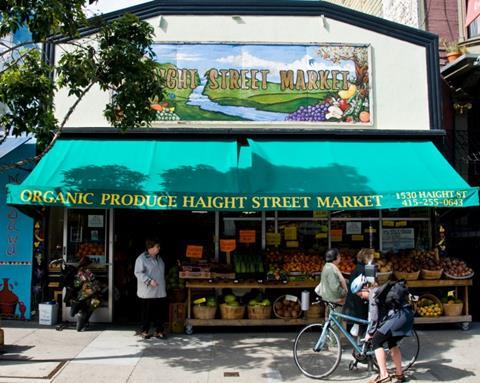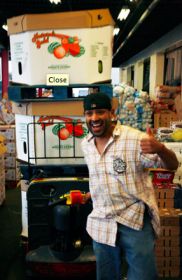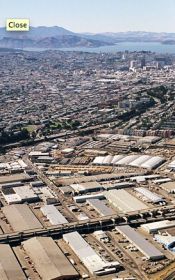
Work on the first phase of a major redevelopment and expansion programme at San Francisco Wholesale Produce Market (SFWPM) started at the end of 2013. Michael Janis, president of San Francisco Wholesale Produce Market, and Scott Salisbury of S&L Wholesale Produce look at what the scheme will mean for the market’s tenants and the Bay Area community it serves.

Can you tell me about the redevelopment programme the market is currently undergoing?
Michael Janis: Let me begin by saying that 2013 was a huge transition year for the market as it saw the launch of a major project to renovate and expand the market that will ultimately increase its capacity by 200,000ft2.
This was made possible thanks to the signing of a new 60-year ground lease with the city authorities which laid the foundations of the market’s future growth. It enables San Francisco Market Corp, a non-profit structure, to use rent revenues to finance the redevelopment.
The first phase of this new expansion involves the construction of an 84,000ft2 warehouse distribution centre on a three-acre site adjacent to the current market which is expected to be completed by the fourth quarter of 2014. The new US$22m building will feature a dock-high loading configuration, floor sales space, refrigerated units and office space.
The expansion is part of a US$100m long-term investment programme that is expected to last for ten years.
How important is the project for the market’s long-term sustainability?
MJ: Like so many other US wholesale markets, our merchants need more space and better logistics in order to ensure that they can continue to serve the city both now and in the future. The market plays a key public service role in the San Francisco Bay Area, and although its core business will continue to be fresh produce, it is hoped that it will attract other key industries following its expansion.
Our merchant base is comprised of more than 30 produce and food-related companies, primarily family-owned businesses, many of which have been in operation for more than 30 years. It’s very diverse – in addition to traditional wholesalers the market is also home to distributors, home delivery companies and catering kitchens.

What will the market’s expansion mean for S&L Wholesale Produce?
Scott Salisbury: We are investing in new equipment and expanding our product line. In light of the current emphasis within the industry on food safety, the expansion of the market will allow us an easier route to achieving those goals.
The market has a new energy and excitement about it since the plans were announced and we’re attracting an increasing volume business from the other two bay area markets.
Are you also looking to boost your role as a retail market?
MJ: Right now our core focus on business to business. San Francisco has a well-established farmers’ market network and we don’t want to complete with this.
How important are sales of imported fruits and vegetables at the market?
SS: There has definitely been an increase in imported products over the years during the off-season. Importers realise what a huge market exists here when local fruits and vegetables are not being produced. With better packaging methods and materials, improved transportation and better controlled shipping, the quality of imported produce has greatly improved and we have expanded our imported product lines to meet our customers’ needs.
The San Francisco Bay Area is a mecca for fresh food. There are thousands of restaurants and a huge diversity in terms of population. Because of this, the demand for fruits and vegetables year-round can only be met by importing products grown elsewhere.

I understand that supplying the city’s Asian and Hispanic communities is an important part of the market’s business. To what extent is demand for ethnic products feeding through to the wider community?
SS: The ethnic trade is a major part of our business. We employ two salesmen who speak fluent Spanish to cater for our Hispanic customers, and two saleswomen who are fluent in Cantonese and Mandarin to serve our Asian customers. I would say the biggest growth in our business has come from these two groups. As they demand products to fit their needs, we expand our lines to accommodate them.
MJ: As Scott said, the bay area is extremely diverse and our international customer base is very important to us. Today, you see lots of products on sale at the market that were once available only in specialist stores.
What other projects does SFWPM have lined up for 2014?
MJ: We will continue to look hard at ways of improving the market to ensure that it’s fit for purpose going forward into the future. As I said, it’s important to recognise the vital role that the market plays in the bay area’s food system. That is why we’re actively involved in initiatives such as the Corner Store Programme, which seeks to improve the health of local residents by helping neighbourhood stores to improve customer access to fresh produce and other healthy foods.



